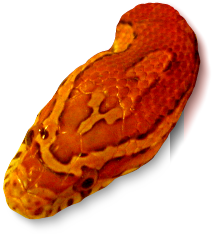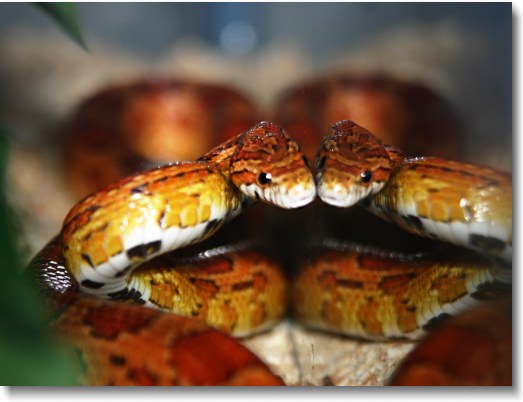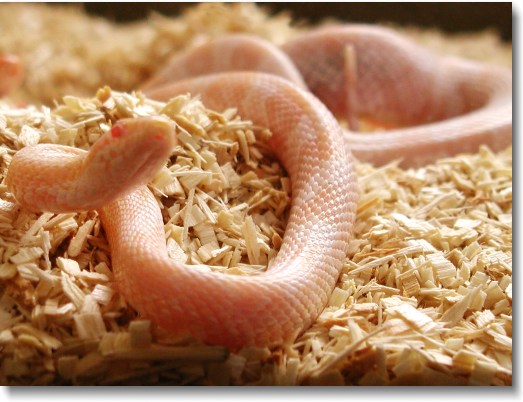Corn Snake
pictures and facts

Introduction
Corn snakes, also known as red rat snakes, are a large, powerful, and non-venomous constrictor in the genus Elaphe. [1] [2] The species in this genus, along with the genus Bogertophis and Senticolis, are known as rat snakes. All the species in these taxa are medium to very large size Colubrids that feed on rodents and other small prey. [3] The Colubrid family contains over 2,000 species worldwide, and is sometimes referred to as the "typical snake." [4] All snakes, including the corn snake, have been persecuted by man out of justifiable fear but also ignorance. The corn snake is a prime example of this latter case, as they are often killed because they resemble a copperhead (a very venomous species). But the more we learn about snakes the less needless fear we will have, and the more we can appreciate their beauty and usefulness. Corn snakes, other rat snakes, and even copperheads are beneficial predators of rodents, which can spread diseases and damage food crops. [5]
A corn snake beside a mirror.
Image Source: Jim Simonson / License under Creative Commons 2.0
Available in three sizes:
1280 x 1024 || 1024 x 768 || 800 x 600
In fact corn snakes got their name both from the pattern on their belly, which looks like Indian corn, and from old southern farmers who stored their harvested corn in wooden buildings called cribs. Rats and mice were attracted to the cribs to feed on the corn, and corn snakes were attracted to the cribs to feed on the rodents, much to the delight and appreciation of the farmers. [6] Corn snakes, like reptiles and amphibians in general, have an amazing metabolism that is able to operate at low oxygen and blood pressure levels. This allows them to survive long periods in oxygen depleted atmospheres, which is why drowning a snake is not effective. And even stranger is that scientists have observed signs of consciousness from the head of a snake for about an hour after the head was cut off from the rest of the body. Clifford Warwick discusses it in his book "Reptiles: Misunderstood, Mistreated and Mass-Marketed" (1990; Nower Productions, UK). And this is why a decapitated venomous snake can still bite. It is also why decapitation is not only ineffective, but quite cruel for the snake. If a reptile or amphibian must be euthanized, the best way involves a complete and rapid destruction of the brain; otherwise they are very likely to suffer enormously for a long time before death. [7] [8]

A young snow corn snake.
Image Source: Photo taken by Corn Snake Pictures & Facts at the San Bernardino County Museum, with permission.
Available in two sizes:
1024 x 768 || 800 x 600
Taxonomy
Kingdom: Animalia -- Animal, animals, animauxPhylum: Chordata -- chordates, cordado, cordés
Subphylum: Vertebrata -- vertebrado, vertebrates, vertébrés
Class: Reptilia Laurenti, 1768 -- répteis, reptiles, Reptiles
Order: Squamata Oppel, 1811 -- Amphisbaenians, amphisbènes, lézards, Lizards, serpents, Snakes
Suborder: Serpentes Linnaeus, 1758 -- cobra, serpente, serpents, Snakes
Infraorder: Alethinophidia Nopcsa, 1923
Family: Colubridae Oppel, 1811 -- Colubrids, Typical Snakes
Genus: Elaphe Fitzinger in Wagler, 1833 -- Corn Snakes, Fox Snakes, Rat Snakes, Ratsnakes
Species: Elaphe guttata (Linnaeus, 1766) -- Corn Snake, Cornsnake, Culebra-ratonera de maiz
Comments: Introduced on Grand Cayman Islands fide Conant and Collins (1991). [9]

Copyright © 2007 Corn Snake Pictures & Facts
Member of Fohn.net
Privacy Policy